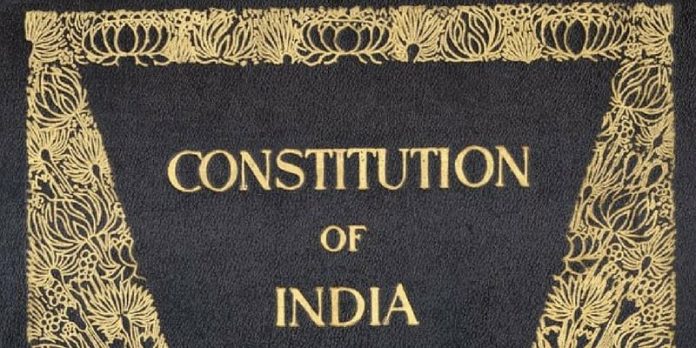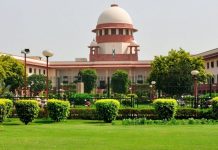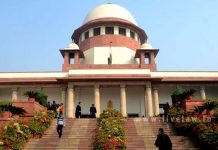This article is written by Arya Mittal from Hidayatullah National Law University. The article seeks to make a comparative analysis of the Indian Constitution at its inception and in contemporary India.
Table of Contents
Introduction
Did you know that nearly two thousand changes were made in the draft Constitution before it was finalized? It took the efforts of three hundred and eighty-nine members of the Constituent Assembly for two years, eleven months, and seventeen days to prepare the longest written Constitution in the world. It has been nearly seventy-one years since the Indian Constitution has been enforced. Ever since its enforcement, it has been trying to serve the needs of a diverse country such as India. The framers of the Constitution played a crucial role in drafting a Constitution inclusive of provisions to cater to the needs of India’s diverse population. However, with the passage of time, certain amendments were brought about in the Constitution. Many of these changes have been applauded and criticised simultaneously but the Indian Constitution has enforced rule of law through all these changes. Some of the important amendments that have been brought in the Indian Constitution have been discussed in this article.
Brief background of the Indian Constitution
The Constitution of India is the world’s lengthiest written constitution. It was enacted on November 26, 1949, and enforced on January 26, 1950. It contains 448 articles divided into twenty-five parts and twelve schedules. Initially, it contained 395 articles divided into twenty-two parts and eight schedules. It took one hundred and four amendments for the Constitution to evolve to its present form.
Analyzing the differences between the Indian Constitution of 1950 and 2021
Preamble
The Preamble of the Indian Constitution is often referred to as the introduction letter to the Indian Constitution. It is ironic how the world’s longest written constitution has just sixty-three words in its Preamble. Even the Preamble that we have today is not the same as that of 1950. The current Preamble declares India as a Sovereign Socialist Secular Democratic Republic. Initially, the words socialist and secular were not a part of the Preamble. They were incorporated during the emergency in 1976 via the Constitution (Forty-second Amendment) Act, 1976.
Article 16
One of the major changes in the Constitution has been brought in Article 16 through a series of amendments. The provision deals with equal opportunity in public employment. The first in this series was the Constitution (Seventy-seventh Amendment) Act, 1995 which was introduced to nullify the effect of the Indira Sawhney case (1992) so that reservations could be allowed in promotions. By this amendment, Article 16(4A) was inserted. Later two amendments relating to reservations were brought in the same year, one of which involved Article 16. Article 16(4B) was inserted which allowed the government to carry-forward the vacancies of the previous year even beyond the fifty percent limit through the Constitution (Eighty-first Amendment) Act, 2000. The year after that, the Constitution (Eighty-fifth Amendment) Act, 2001 was passed to amend Article 16(4A) and as a result of the amendment, consequential seniority was introduced for promoted SC/ST candidates. Recently, Article 16(6) was introduced through the Constitution (One Hundred and Third Amendment) Act, 2019 which provided for ten percent reservation in favor of economically weaker sections of the society.
Article 21A
Article 21A did not exist in the Indian Constitution adopted by the Constituent Assembly. It was only in 2002 that the provision found its place in the Indian Constitution through the Constitution (Eighty-sixth Amendment) Act, 2002. The provision makes it a fundamental right to have access to free elementary education for children aged six to fourteen years of age and it is the duty of the State to provide so. Nevertheless, one must know that education was earlier provided in Part IV under Article 45.
Article 31
Article 31 dealt with the fundamental Right to Property. The provision was later removed by the Constitution (Forty-fourth Amendment) Act, 1978, and Articles 31A, 31B, 31C, and 300A were inserted. Though the first three provisions are a part of Part III of the Constitution yet they did not provide any fundamental right to own property, rather they were the imposition of restrictions for owning a property. Currently, the Right to Property is only a legal right under Article 300A.
Article 246A
Article 246A was not initially present in the Constitution. Since the governments did not have the power to levy and collect goods and service tax, the Constitution (One Hundred and First Amendment) Act, 2016 was passed to give power to the Central and state governments to collect Goods and Service Tax (GST) on its supply. GST was made applicable from July 01, 2017. Many of the indirect taxes have been subsumed under GST. It has been beneficial legislation that has been fruitful in reducing compliances of businessmen and tax burden on end-users. It will prove to be even better in the future.
Article 326
We all know that India is a democratic country and we vote our representatives to the central and state legislature. Article 326 provides that voting in elections of Lok Sabha and various state legislatures is done by adult suffrage i.e. citizens of India aged above eighteen years of age. However, it was not before the Constitution (Sixty-first Amendment) Act, 1988 that the age for voting was reduced to eighteen years. Prior to the amendment, an eligible voter had to be of twenty-one years of age which was later reduced to the age of eighteen years in 1988.
Article 338
The original Article 338 provided for the Constitution of the National Commission for Scheduled Castes and Scheduled Tribes for safeguarding their rights and assuring their welfare since the people belonging to SC and ST communities were in a miserable state after independence due to the discrimination and torture they had to face. Earlier, a special officer was appointed for this purpose which was later replaced by a multi-member commission through the Constitution (Sixty-fifth Amendment) Act, 1990. Later, an amendment was brought to bifurcate the commission for Scheduled Caste and Scheduled Tribes.
Article 338A
As mentioned above, an amendment was introduced to bifurcate the commission. By virtue of the Constitution (89th Amendment) Act, 2003, Article 338A was introduced and the National Commission for Scheduled Tribes was formed. Therefore, post-amendment, Article 338 exclusively dealt with the National Commission for Scheduled Castes and Article 338A exclusively dealt with the National Commission for Scheduled Tribes. This bifurcation and multi-member commission was not prevalent in the Indian Constitution in 1950 and was only introduced in later years through amendments.
Article 338B
Article 338B was introduced a couple of years back by the Constitution (One Hundred and Second Amendment) Act, 2018 which formulated a National Commission for Backward Classes. The amendment came in 2018 after the National Commission for Backward Classes was provided with a Constitutional status under the Ministry of Social Justice and Empowerment.
Article 370
Article 370 was a temporary provision in the Indian Constitution that gave special status to the state of Jammu and Kashmir in terms of autonomy in the formation of its own Constitution and laws. However, in 2019, the Constitution (Application To Jammu And Kashmir) Order, 2019 was made by the President and Jammu and Kashmir Reorganisation Act, 2019 was passed by the Parliament in order to amend Article 367 of the Constitution, which had earlier created a deadlock. Consequently, Article 370 of the Constitution was abrogated.
Part IVA
As stated earlier, the Indian Constitution of 1950 had only twenty-two parts. Later, three parts were added through amendments. One of them is Part IVA of the Indian Constitution which deals with fundamental duties. Part IV-A was added to the Indian Constitution through the Constitution (Forty-second Amendment) Act, 1976. Part IVA has just one provision i.e. Article 51A which deals with the fundamental duties of the citizens. These fundamental duties were incorporated in the Constitution with the aim of curbing unconstitutional and disruptive activities. It lays down certain fundamental duties which every Indian citizen should obey which are moral obligations and are not enforceable in a court of law.
Seventh Schedule
The Seventh Schedule deals with three legislative lists i.e., Union List (List I), State List (List II), and Concurrent List. (List III). Initially, the Union List contained ninety-seven items. Thereafter various entries were added and omitted through different Constitutional Amendments. Currently, the List has one hundred entries. Further, List II contained sixty-six times in the beginning. Thereafter, five entries were transferred from List II to List III through the Constitution (Forty-second Amendment) Act, 1976. In between, various amendments also took place to change the wordings of different entries.
Eighth Schedule
Initially, the Eighth Schedule contained fourteen languages in 1950. Later, Sindhi was added through the Constitution (Twenty-first Amendment) Act, 1967. In 1992, Konkani, Manipuri, and Nepali were added through the Constitution (Seventy-first Amendment) Act, 1992. Lastly, Bodo, Dogri, Maithili, and Santali were added through the Constitution (Ninety-second Amendment) Act, 2003. It was important for the representation of many other linguistic committees for commission formed under Article 344 of the Constitution.
Tenth Schedule
The Tenth Schedule deals with anti-defection laws. These were incorporated in the Constitution to ensure that politicians do not change their parties frequently for their personal interests. The Schedule prescribes certain disqualifications on grounds of defection. As discussed above, the Indian Constitution only had eight schedules in 1950 during its enforcement. Hence, it makes it evident that the Schedule was added by an amendment. The Constitution (Fifty-second Amendment) Act, 1985 was introduced to incorporate the Tenth Schedule. Thereafter, certain changes were brought in the Schedule through the Constitution (Ninety-first Amendment) Act, 2003.
Conclusion
Though these are not the only significant amendments in the Constitution, since every amendment is significant in its own sense, an attempt was made to understand the long journey that our Constitution has travelled over the years. It has been able to cater to the needs of a diverse country such as India with one hundred and four amendments in the past seventy-one years. Different amendments have been passed in these past seven decades to address economical needs, social needs, political needs, etc. In the process, the Indian Constitution has tried to become more just and equitable. It has led a long journey to secure justice, equality, liberty, and fraternity for all its citizens as mentioned in the Preamble of the Indian Constitution.
References
- https://legislative.gov.in/sites/default/files/COI-updated.pdf
- https://legislative.gov.in/amendment-acts
Students of Lawsikho courses regularly produce writing assignments and work on practical exercises as a part of their coursework and develop themselves in real-life practical skills.
LawSikho has created a telegram group for exchanging legal knowledge, referrals, and various opportunities. You can click on this link and join:
https://t.me/joinchat/J_0YrBa4IBSHdpuTfQO_sA
Follow us on Instagram and subscribe to our YouTube channel for more amazing legal content.













